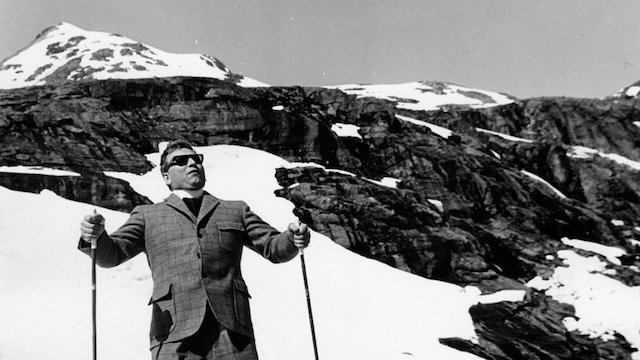
The Man Who Could Not Laugh
Where to Watch The Man Who Could Not Laugh

The Man Who Could Not Laugh is a 1968 Norwegian comedy film that presents a unique blend of humor and social commentary, showcasing the distinctive talents of its lead actors, Rolv Wesenlund, Birgitta Andersson, and Harald Heide-Steen Jr. Directed by pioneering filmmaker and celebrated comic talent, this film offers a satirical look at the nature of laughter and the often absurd lengths people go to in pursuit of happiness.
At the heart of the story is the protagonist, played by Rolv Wesenlund, a man burdened by an unusual condition—he simply cannot laugh. This absence of laughter serves as a critical device in the narrative, highlighting both his internal struggles and the external perceptions of those around him. Wesenlund's character embodies a universal theme of longing for connection and joy, attributes that are often signaled through laughter. His inability to engage in one of the most fundamental human expressions creates a rift between him and his peers, setting the stage for a series of comedic yet poignant events.
Supporting Wesenlund, Birgitta Andersson plays a significant role that adds depth to the narrative. She captures the essence of warmth and compassion, serving as a bridge between the protagonist's isolated existence and the vibrant world around him. Her interactions with him are marked by a genuine desire to understand his plight, bringing tenderness to the film's overall tone. The chemistry between Andersson and Wesenlund is palpable, creating moments that juxtapose light-hearted situations with deeper existential reflections.
Harald Heide-Steen Jr. adds another layer of humor and insight to the film as a quirky yet relatable character who becomes intertwined with the protagonist’s journey. His exuberant and often absurd antics provide comic relief, while also serving as a mirror to the protagonist’s internal conflict. Heide-Steen's comedic timing complements Wesenlund's more subdued performance, enhancing the film's comedic elements without detracting from the overall narrative arc.
The film is skillfully crafted to challenge audiences to reflect on their own relationship with laughter and the societal pressures that accompany it. Through its comedic lens, it addresses themes of acceptance, the human condition, and the often-elusive pursuit of happiness. The moments of levity throughout the film are balanced with introspective scenes, inviting the audience to consider what it truly means to laugh and the significance of joy in one’s life.
The cinematography and direction further enhance the film’s comedic spirit, with carefully crafted scenes that build upon the absurdity of the situations faced by the characters. The visual storytelling complements the dialogue, creating a rich tapestry of humor that showcases both physical and verbal comedy. The film’s pacing maintains a lively rhythm, ensuring that the audience remains engaged from start to finish.
In addition to its humor, The Man Who Could Not Laugh also explores the societal implications of laughter as a social currency. As the protagonist navigates a world that often equates laughter with happiness, he encounters various characters who represent different perspectives on joy and fulfillment. These interactions serve as a critique of societal norms, inviting viewers to examine their own assumptions about what it means to be joyful and what barriers might exist to authentic happiness.
The film's script is peppered with clever dialogue and quotable lines that contribute to its status as a classic of Nordic cinema. The blend of situational comedy, character-driven humor, and insightful commentary makes it not only entertaining but also thought-provoking. Each scene is crafted to balance wit and poignancy, ensuring that audiences leave with more than just a few laughs.
In summary, The Man Who Could Not Laugh is a delightful exploration of the complexities of happiness and the human experience. With a strong cast led by Rolv Wesenlund, Birgitta Andersson, and Harald Heide-Steen Jr., the film masterfully combines humor with heart. It engages viewers with its unique premise while encouraging a deeper reflection on the nature of laughter and the connections we forge through shared experiences. This film remains a beloved gem in Norwegian cinema, charming audiences with its wit and leaving them to ponder the intricacies of joy long after the credits roll.
The Man Who Could Not Laugh is a Comedy movie released in 1968. It has a runtime of 92 Critics and viewers have rated it moderate reviews, with an IMDb score of 5.4..










